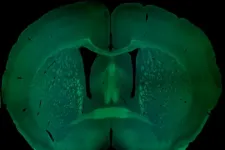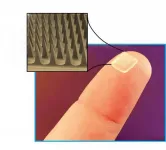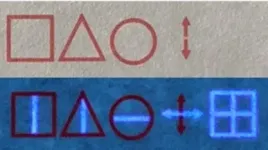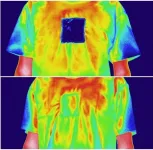(Press-News.org) After reviewing a database of gene mutations in children with autism spectrum disorder (ASD), a team of Medical University of South Carolina (MUSC) researchers decided to study a specific gene mutation that likely caused ASD in a girl. They demonstrated that the mutation was damaging to the gene, and that female, but not male, mice lacking a working copy of the gene also showed ASD-associated symptoms. Better understanding the interplay between genetics and sex in ASD could set the stage for developing sex-specific treatments for autism.
The MUSC team was led by Christopher Cowan, Ph.D., the William E. Murray SmartState Endowed Chair in Neuroscience and chair of the Department of Neuroscience, and Ahlem Assali, Ph.D., research assistant professor in the same department. Their findings are published in Nature Neuropsychopharmacology.
One in 54 children is diagnosed with an ASD. Of the children with ASD, four boys are diagnosed for every girl. Individuals with ASD typically have deficits in communication and social interaction and exhibit restricted, repetitive patterns of behavior, activities, or interests. Many people with ASD also present with associated symptoms, such as hyperactivity, attention deficits, epilepsy and intellectual abilities that can range from severely disabled to gifted.
Cowan and Assali investigated the effect of a mutation in the gene, EPHB2, detected in a female patient with autism. EPHB2 is important for forming connections, or synapses, in the brain. The patient had a version of EPHB2 that caused the protein to be cut short. "It's as if a sentence had a period in the middle instead of the end," said Cowan. The shortened protein can no longer serve its function, leaving this ASD individual with less functional protein than neurotypical people.
To confirm that this gene can cause autism, Cowan and Assali created mice that had only one of two working copies of EPHB2. They found that these animals showed repetitive behaviors, hyperactivity and learning and memory problems as well as changes in brain cell function.
Cowan and Assali went a step further and divided the animals based on sex. They did this because the child with ASD and the EPHB2 mutation was a female. They found that the female mice showed much stronger behavior symptoms and brain cell dysfunction than the male mice. Understanding the interplay between genetics and biological sex could be important for understanding autism risk and eventually for developing therapeutics.
"We know that 80% to 90% of autism risk is genetic, but this is a very clear-cut case where the gene and the sex of the animal are interacting to alter neurotypical development," said Cowan.
Historically, ASD has been diagnosed mostly in boys, so research on ASD has often been biased toward male subjects. The work of Cowan and Assali highlights the importance of sex-specific differences in ASD and the need to examine those differences in research studies that include both sexes. This could set the stage for developing sex-specific treatments for ASD.
"That's the only way we're going to start to change research inequalities that have happened in the past," said Assali.
In future studies, Cowan and Assali hope to explore more deeply the mechanisms of EPHB2 actions in the developing brain. They want to understand why this gene causes symptoms predominantly in female subjects and how hormones might affect autism risk. Their aim is to improve the understanding of the interplay between genetics and biological sex in autism, with a view to informing future personalized, sex-specific treatments for ASD.
INFORMATION:
About the Medical University of South Carolina
Founded in 1824 in Charleston, the Medical University of South Carolina (MUSC) is home to the oldest medical school in the South as well as the state's only integrated academic health sciences center, with a unique charge to serve the state through education, research and patient care. Each year, MUSC educates and trains more than 3,000 students and nearly 800 residents in six colleges: Dental Medicine, Graduate Studies, Health Professions, Medicine, Nursing and Pharmacy. MUSC brought in more than $271 million in biomedical research funds in fiscal year 2020, continuing to lead the state in obtaining National Institutes of Health funding, with more than $129.9 million. For information on academic programs, visit musc.edu.
As the clinical health system of the Medical University of South Carolina, MUSC Health is dedicated to delivering the highest quality patient care available while training generations of competent, compassionate health care providers to serve the people of South Carolina and beyond. Comprising some 1,600 beds, more than 100 outreach sites, the MUSC College of Medicine, the physicians' practice plan and nearly 275 telehealth locations, MUSC Health owns and operates eight hospitals situated in Charleston, Chester, Florence, Lancaster and Marion counties. In 2020, for the sixth consecutive year, U.S. News & World Report named MUSC Health the No. 1 hospital in South Carolina. To learn more about clinical patient services, visit muschealth.org.
MUSC and its affiliates have collective annual budgets of $3.2 billion. The more than 17,000 MUSC team members include world-class faculty, physicians, specialty providers and scientists who deliver groundbreaking education, research, technology and patient care.
A recent study from the University of Helsinki monitors the breakthrough progresses in the development of microneedles for immunotherapy and discusses the challenges regarding their production. Researchers suggest using microneedles for immunotherapy due to the high abundance of immune cells under the skin. The aim is to vaccinate or treat different diseases, such as cancer and autoimmune disorders, with minimal invasiveness and side effects.
"Our study addresses the recent achievements in the development of microneedles for immunotherapy of hard-to-treat and chronic diseases to achieve the highest efficiency with minimal side effects," says ...
There is currently no consensus on what quality end-of-life care for children with cancer looks like, or how to measure and deliver it; however, investigators recently assembled an expert panel to help fill this void. In a study published early online in CANCER, a peer-reviewed journal of the American Cancer Society, the panel endorsed 16 measures that cover different aspects of care that are important for children with cancer and their families.
"Measuring the quality of the care delivered is an essential part of ensuring high quality end-of-life care ...
Coded messages in invisible ink sound like something only found in espionage books, but in real life, they can have important security purposes. Yet, they can be cracked if their encryption is predictable. Now, researchers reporting in ACS Applied Materials & Interfaces have printed complexly encoded data with normal ink and a carbon nanoparticle-based invisible ink, requiring both UV light and a computer that has been taught the code to reveal the correct messages.
Even as electronic records advance, paper is still a common way to preserve data. Invisible ink can hide classified economic, commercial or military ...
Marine scientists are calling on the EU to adopt a comprehensive plan to protect dolphins and porpoises from fisheries bycatch in European waters.
A team of conservation experts, including Newcastle University's Professor Per Berggren, highlight limitations in EU's efforts to address and mitigate bycatch. The scientists argue this infective response is a result of scattered and complicated management responsibility for the conservation of dolphins and porpoises in Europe, and from a lack of quantitative conservation objectives, including biological reference points ...
Reflexes protect our bodies - for example when we pull our hand back from a hot stove. These protective mechanisms could also be useful for robots. In this interview, Prof. Sami Haddadin and Johannes Kühn of the Munich School of Robotics and Machine Intelligence (MSRM) of the Technical University of Munich (TUM) explain why giving test subjects a "slap on the hand" could lay the foundations for the robots of the future.
In your paper, published in Scientific Reports, you describe an experimental setup where people were actually slapped on the hand - to study their reflexes....
Kühn: Yes, you can put it that way. For our study, in cooperation with Imperial College London, the test ...
Clothing, from tank tops to parkas, helps people adapt to temperatures outdoors. But you can only put on or take off so much of it, and fluctuations in weather can render what you are wearing entirely inadequate. In a new study in ACS' Nano Letters, researchers describe a high-tech alternative: a reversible textile they designed to trap warmth in the cold and reflect it during hot weather, all while generating small amounts of electricity.
Previous attempts to develop such sophisticated textiles for outdoor use have generally focused on either capturing thermal radiation or dispersing it. To integrate the two, Qiang Li, Min Qiu and colleagues made a ...
More research is urgently needed into the impact that attending suicide events is having on paramedics and other first responders, a researcher at the University of Otago, New Zealand, says.
PhD student Renan Lyra, a psychologist by training, says a significant proportion of police officers, firefighters and paramedics will attend at least one suicide event in their careers, but there has been little research into the impact this has on their personal and professional lives and on their own suicide risk.
Mr Lyra has reviewed 25 research papers on the impact attending a suicide event has on those ...
A curiously yellow star has caused astrophysicists to reevaluate what's possible within our universe.
Led by Northwestern University, the international team used NASA's Hubble Space Telescope to examine the massive star two-and-a-half years before it exploded into a supernova. At the end of their lives, cool, yellow stars are typically shrouded in hydrogen, which conceals the star's hot, blue interior. But this yellow star, located 35 million lightyears from Earth in the Virgo galaxy cluster, was mysteriously lacking this crucial hydrogen layer at the time of its explosion.
"We haven't seen this scenario before," said Northwestern's ...
CATONSVILLE, MD, May 4, 2021 - Paid video streaming services on your television, smart phone or other devices are increasingly replacing traditional video entertainment platforms of cable, satellite and broadcast TV. The growth of these services, known in the industry as over-the-top (OTT) media services, may be accompanied by a rise in pirated content, particularly where access to those services may be restricted, a group of researchers has found.
The researchers studied the effects of the Netflix - one of the leading global companies in paid video streaming - and its growth in 40 Asian countries. They also studied one country where access to Netflix was restricted, which is where ...
Carnegie Mellon University's He Lab is focusing on noninvasive neuroengineering solutions that not only provide diagnostic techniques, but also innovative treatment options. Their latest research has demonstrated that noninvasive neuromodulation via low-intensity ultrasound can have cell-type selectivity in manipulating neurons.
Parkinson's Disease, epilepsy and insomnia are just a few of the neurological disorders that use neuromodulation treatment techniques today. Neuromodulation delivers controlled physical energy to the nervous system to treat and improve patients' quality of life. Current neuromodulation approaches, while effective, bring both drawbacks and limitations.
"Deep ...






